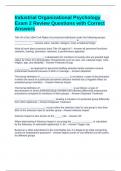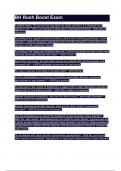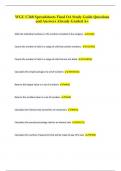Exam (elaborations)
Industrial Organizational Psychology Exam 2 Review Questions with Correct Answers
- Course
- Institution
Title VII of the 1964 Civil Rights Act protected individuals under the following groups: _________, ___________, ___________, ___________, & _____________ _____________. - Answer-Race, Gender, Religion, Color & National Origin What all work place practices does Title VII apply to? - Answer-all p...
[Show more]





